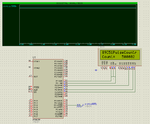cool.man
Full Member level 6
Hi,
I want to measure pulses frequency using timer0.pulses frequency is from 0 Hz to 2kHz.can anyone tell me how to do that.give me a sample program.
I am using CCS compiler version 4.093 and pic 18f252.
I want to measure pulses frequency using timer0.pulses frequency is from 0 Hz to 2kHz.can anyone tell me how to do that.give me a sample program.
I am using CCS compiler version 4.093 and pic 18f252.
